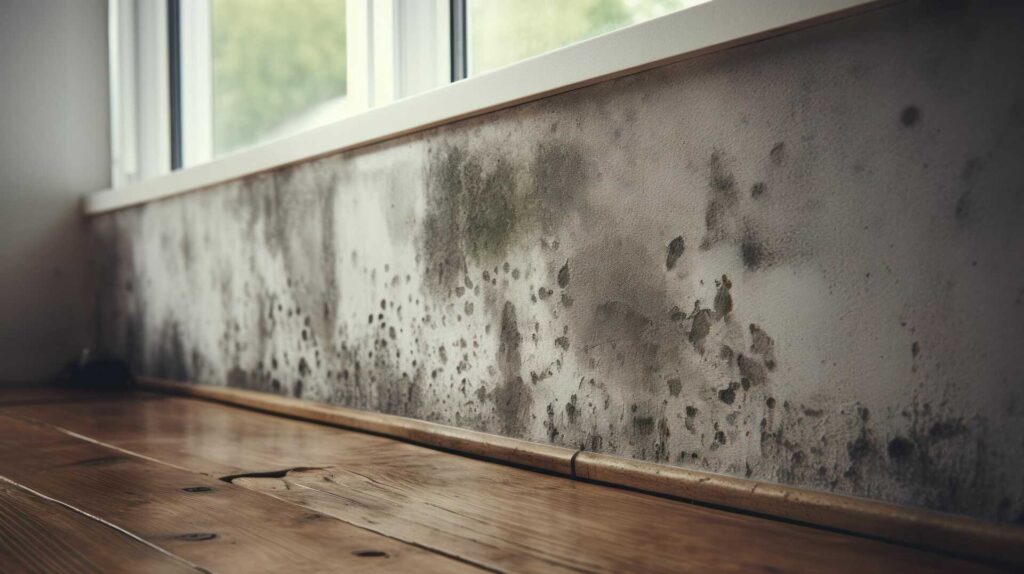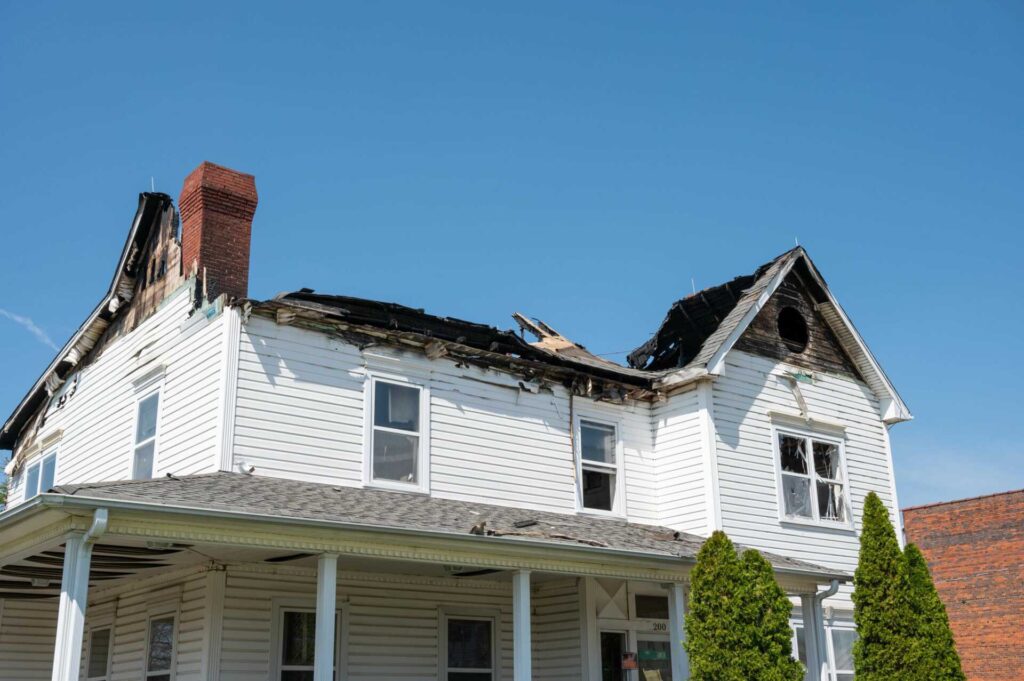
Contents
Like the fabled hero who faces the monster lurking in the shadows, you’re about to confront an unwelcome invader in your home: mold. It’s crucial to tackle this problem head-on with effective DIY strategies that address the current issue and prevent future outbreaks. From identifying moisture sources to gathering the right supplies, there’s a systematic approach you can take. But what specific steps should you follow to ensure a thorough remediation? Let’s explore the essential tips that can empower you to reclaim your space.
Key Takeaways
- Identify and eliminate moisture sources, such as leaks or condensation, to prevent mold growth.
- Gather necessary supplies like mold testing kits, PPE, and effective cleaning solutions for safe remediation.
- Ensure proper ventilation by opening windows, using fans, and checking HVAC systems to disperse mold spores.
- Clean affected areas with mold-specific solutions, ensuring thorough drying to prevent the recurrence of the mold.
- Regularly inspect and maintain areas prone to moisture, using mold-resistant materials and exhaust fans to reduce humidity.
Identify Mold Sources
When you’re tackling mold remediation, identifying mold sources is crucial, as it allows you to address the problem at its root. Mold can thrive in various environments, but it primarily requires moisture to grow. So, your first step is to locate the moisture sources contributing to mold development. Common moisture sources include leaks from pipes, roof damage, or even condensation in poorly ventilated areas.
Once you’ve pinpointed these sources, you’ll want to assess the types of mold present. Different mold types can indicate specific issues in your home. For instance, black mold often signals significant water damage or chronic moisture problems, while other mold types might thrive in more humid conditions, such as bathrooms or basements.
It’s essential to investigate all potential areas where moisture accumulates. Check behind appliances, under sinks, and in areas where water might collect unnoticed. Pay attention to HVAC systems, as they can also harbor moisture and promote mold growth if not maintained properly.
Understanding the relationship between moisture sources and mold types helps you remediate effectively and prevents future outbreaks. By tackling the root causes and recognizing the specific mold types involved, you’re setting yourself up for a healthier living environment.
Gather Necessary Supplies
Before diving into mold remediation, it’s essential to gather the right supplies to ensure an effective cleanup process. Start by assessing your needs based on the severity of the mold problem. If you’re dealing with a small area of mold, basic supplies may suffice, but larger infestations might require additional equipment.
First, consider mold testing kits to identify the type of mold present. This information can guide your approach in treating the specific type you’re dealing with.
Once you’ve established the mold’s nature, you’ll need personal protective equipment (PPE) like gloves, masks, and goggles to safeguard yourself during the remediation process.
Next, gather cleaning supplies such as a mold-specific cleaner or a mixture of water and vinegar. A stiff brush and scrub pads will help you tackle the physical removal of mold from surfaces.
Don’t forget to include disposal bags for safe waste removal. In addition, you might want to invest in a dehumidifier to control moisture levels, which is crucial for preventing future mold growth.
Be sure to have proper supply storage in place; keeping your materials organized will streamline your cleanup efforts and make it easier to access what you need when you need it.
Finally, familiarize yourself with the local regulations regarding mold removal, especially if you’re dealing with more extensive contamination.
With the right supplies gathered and a clear plan, you’ll be well on your way to effectively managing mold in your space.
Ensure Proper Ventilation
Proper ventilation is crucial during mold remediation, as it helps to reduce humidity and disperse mold spores in the air. When you’re tackling mold, you want to prevent the spores from spreading to other areas of your home. Ensuring effective air circulation is key, and this involves using your ventilation systems strategically.
Start by opening windows and doors to create a cross breeze, which increases air circulation and allows fresh air to flow in while pushing stale air out. If the weather isn’t conducive to open windows, consider using fans to enhance airflow. Position them to direct air outside, which can help carry mold spores away from the affected area.
In addition, check your ventilation systems, such as HVAC units, to ensure they’re functioning properly. Clean or replace filters as needed since a clogged filter can restrict airflow and contribute to humidity.
If your space has exhaust fans, utilize them to help remove moisture-laden air, especially in areas like kitchens and bathrooms where humidity is higher.
Lastly, if you have a dehumidifier, use it to maintain optimal humidity levels. Keeping humidity below 60% can significantly hinder mold growth.
Use Effective Cleaning Solutions
Using effective cleaning solutions is essential for successful mold remediation, as the right products can eliminate mold spores and prevent regrowth. You need to choose solutions specifically designed for mold cleaning to ensure maximum solution effectiveness.
Common household items, like white vinegar and baking soda, can be effective against mild mold infestations. However, for more severe cases, you might want to consider commercial products that contain fungicides.
When selecting a cleaning solution, pay attention to the active ingredients. Solutions with hydrogen peroxide or sodium hypochlorite can be particularly powerful. For example, a mixture of one cup of bleach to one gallon of water can tackle mold on non-porous surfaces effectively.
Just remember, never mix bleach with ammonia, as this creates toxic fumes.
Before you start, always test the solution on a small, inconspicuous area to ensure it won’t damage the material. Once you’ve confirmed its safety, apply the solution generously and let it sit for a while to penetrate the mold. Scrubbing with a brush will help lift the mold from the surface.
After cleaning, be sure to thoroughly rinse the area with water and dry it completely. This step is crucial to prevent future mold growth.
Follow Safe Removal Techniques
When tackling mold removal, prioritizing your safety is essential.
Make sure you wear appropriate personal protective equipment (PPE) to shield yourself from harmful spores.
Additionally, setting up a containment area helps prevent mold from spreading to other parts of your home during the removal process.
Personal Protective Equipment
Mold remediation requires a thorough understanding of personal protective equipment (PPE) to ensure your safety throughout the process. Proper PPE types play a crucial role in protecting you from exposure to mold spores and harmful substances.
Start with a high-quality respirator equipped with HEPA filters to prevent inhalation of airborne particles. N95 masks are an alternative, but they may not offer the same level of protection.
Next, wear gloves—nitrile or rubber are ideal—to shield your skin from mold and cleaning agents. Long-sleeved clothing, including disposable coveralls, can further minimize skin exposure.
Safety goggles are essential as well; they protect your eyes from irritants and spores that may become airborne during remediation.
Always follow safety guidelines when working in contaminated areas. Ensure adequate ventilation by opening windows and using fans to circulate air, but avoid creating excessive dust.
It’s wise to take breaks in fresh air to prevent fatigue. Lastly, make sure you have a first aid kit on hand, just in case.
Containment Area Setup
After ensuring your safety with appropriate personal protective equipment, setting up a containment area is the next critical step in the mold remediation process.
This area helps prevent mold spores from spreading to other parts of your home, allowing for a safer and more effective cleanup. Start by installing containment barriers, such as plastic sheeting, to isolate the mold-affected area.
Make sure these barriers extend from the floor to the ceiling, and seal all edges with duct tape to ensure airtightness.
Creating a negative pressure environment is essential. Use a high-efficiency particulate air (HEPA) vacuum or an air scrubber to pull air from the containment area, forcing it out through a filtered exhaust.
This setup prevents mold spores from escaping and contaminating other spaces. Additionally, keep your windows and doors closed to minimize airflow that could disturb mold spores.
Dry Affected Areas Thoroughly
To prevent mold from returning, you must dry affected areas thoroughly.
Ensuring proper airflow is essential, as it helps accelerate the drying process.
Additionally, using dehumidifiers can effectively reduce moisture levels, further inhibiting mold growth.
Importance of Airflow
Effective airflow is crucial in mold remediation, as it facilitates the thorough drying of affected areas. When you enhance air circulation, you’re actively reducing the moisture levels that mold thrives on. This is particularly important in spaces that have experienced water damage, where stagnant air can lead to persistent humidity.
By ensuring that air moves freely, you create an environment that discourages mold growth and promotes quicker drying.
To achieve optimal airflow, consider opening windows and doors to allow fresh air to flow in. You can also use fans to direct air towards damp areas, accelerating the drying process. This method helps in drying and aids in humidity control, which is essential for long-term mold prevention.
Remember that mold spores can easily spread when disturbed, so maintain a balance between airflow and safety. If you’re using fans, point them towards the affected areas, but avoid blowing air directly onto surfaces that may release spores into the air.
Use of Dehumidifiers
How can you ensure that affected areas dry thoroughly after a mold outbreak? One effective solution is using dehumidifiers.
Selecting the right dehumidifier types and setting them to optimal settings can significantly accelerate the drying process, helping to prevent future mold growth.
Here are four steps to effectively use dehumidifiers:
Choose the Right Type: Opt for a refrigerant dehumidifier for warmer areas and a desiccant dehumidifier for cooler, damp spaces.
Set Optimal Levels: Aim for humidity levels between 30% and 60%. This range aids in drying and discourages mold spores from thriving.
Position Strategically: Place the dehumidifier in the center of the affected area, ensuring unobstructed airflow to maximize efficiency.
Monitor Regularly: Keep an eye on the humidity levels with a hygrometer. Adjust settings as needed to maintain optimal conditions.
Prevent Future Mold Growth
Mold prevention hinges on controlling moisture and maintaining a clean environment. By actively managing humidity levels and ensuring your space remains clean, you can significantly reduce the risk of mold growth.
Start by using mold-resistant materials in areas prone to moisture, such as bathrooms and kitchens. These materials, like mold-resistant drywall and paint, can provide an extra layer of protection against mold spores.
In addition to using the right materials, perform routine inspections of your home. Check for leaks in plumbing, roofs, and windows. Even small leaks can create ideal conditions for mold to thrive. If you find any damp areas, address them immediately to prevent further moisture accumulation.
Another key aspect of mold prevention is ventilation. Ensure that your living spaces, particularly basements and attics, are well-ventilated. Use exhaust fans in bathrooms and kitchens to reduce humidity from cooking and showering. During humid months, consider running your air conditioning to help control moisture levels.
Finally, keep your home clean by regularly dusting and vacuuming. Pay special attention to areas that often collect dust and moisture, like behind appliances and under sinks.
Summary
By tackling mold head-on, you can transform your space from a damp, musty environment into a fresh, healthy haven. Picture sunlight streaming through open windows, banishing shadows of mold, while the air feels crisp and clean. Remember, addressing moisture sources and maintaining low humidity levels are key to preventing future growth. With the right supplies and techniques, you’re cleaning and reclaiming your home, ensuring it remains a safe sanctuary for you and your loved ones.



